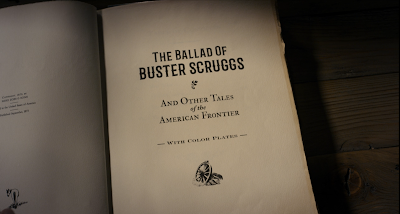(Now that my personal website is dead, I'm moving this essay here for posterity.—JMc, 2022)
 Passers-by usually don't notice. After all, one monument looks so much like another, especially in the Public Gardens, which is littered with statues, fountains, and plaques. When someone does stop to look at the cluster of red marble columns and granite arches, set in an empty pool bed, they laugh or scratch their heads. "Would you look at that," one elderly woman says to her companion, and reads aloud the inscription: "To commemorate that the inhaling of ether causes insensibility to pain at the Mass. General Hospital in Boston October A.D..." She fumbles with the Roman numerals of the date, laughs with embarrassment.
Passers-by usually don't notice. After all, one monument looks so much like another, especially in the Public Gardens, which is littered with statues, fountains, and plaques. When someone does stop to look at the cluster of red marble columns and granite arches, set in an empty pool bed, they laugh or scratch their heads. "Would you look at that," one elderly woman says to her companion, and reads aloud the inscription: "To commemorate that the inhaling of ether causes insensibility to pain at the Mass. General Hospital in Boston October A.D..." She fumbles with the Roman numerals of the date, laughs with embarrassment.
Today a monument to ether may seem strange, but for those living in the nineteenth century the drug was nothing short of a miracle. "The greatest invention for humanity since the printing press," one contemporary wrote. Imagine having a tooth pulled without Novocain, a tumor removed without general anesthesia, or a leg amputated with only a bullet to bite. Then you can understand why private citizen Thomas Lee paid handsomely ($6,300 for the statuary alone) to publicly commemorate the first etherized operation, which took place in Boston in 1846. On October 16 of that year, dentist Thomas G. Morton electrified an audience of surgeons and medical students in the operating theater of Massachusetts General Hospital when he put a printer, Gilbert Abbot, to sleep. The attending surgeon then removed a tumor from the sleeping patient's neck: no thrashing, no screams, no restraint by assistants. The theater broke into cheers.
Morton hadn't invented ether. The volatile liquid was discovered in the thirteenth century-maybe earlier-and by Victorian times, many middle-class party-goers in Europe and America used the drug recreationally at so-called "ether frolics." Sometimes the giggling, red-eyed revelers were so insensible they struck themselves on tables, chairs, or the floor-opening bloody wounds that went unnoticed until much later. Morton was the first to suggest ether's surgical use, or so he claimed. Shortly after Morton's demonstration at Mass General, another Boston dentist, Charles T. Jackson, claimed that Morton had stolen his discovery. Jackson was so open and persistent in his rancor towards Morton that the public joined the battle on both sides. Eventually, opinion decided in favor of Morton, but as late as 1882 Mark Twain sided with Jackson, proclaiming that the Ether Monument "is made of hardy material, but the lie it tells will outlast it a million years."
 Twain wasn't being quite fair. Unveiled in 1868, in the full bloom of the controversy, the Ether Monument bears the name of neither dentist; Oliver Wendell Holmes called it a tribute "to ether-or either." Avoiding the issue in typical Bostonian fashion, the granite statue crowning the memorial isn't Morton or Jackson-it's the Good Samaritan. When commissioning the piece, the monument's architects asked young sculptor John Quincy Adams Ward for something that would show relief from suffering "in the rudest way consistent with artistic feeling," and they got what they were looking for. The sculpture was just to the tastes of the conservative Boston elite, and made Ward's career as a public artist.
Twain wasn't being quite fair. Unveiled in 1868, in the full bloom of the controversy, the Ether Monument bears the name of neither dentist; Oliver Wendell Holmes called it a tribute "to ether-or either." Avoiding the issue in typical Bostonian fashion, the granite statue crowning the memorial isn't Morton or Jackson-it's the Good Samaritan. When commissioning the piece, the monument's architects asked young sculptor John Quincy Adams Ward for something that would show relief from suffering "in the rudest way consistent with artistic feeling," and they got what they were looking for. The sculpture was just to the tastes of the conservative Boston elite, and made Ward's career as a public artist.
When you visit the monument, be sure to look for the four reliefs by Ward, hidden under the monument's Gothic arches. The south relief shows an operation under anesthesia; the doctors wear a mix of nineteenth century and classical costume. On the east relief, an angel of mercy descends to relieve a suffering figure. The inscription from the Book of Revelation reads, "Neither shall there be any more pain." Then as now, people worried about the religious implications of medical science, and the relief on the west side also addresses these anxieties. Here, a woman who represents Science Triumphant sits atop a throne of test tubes, burners and distillers, while to the side, a Madonna and Child look on with approval. The inscription from Isaiah tells the viewer that anesthesia is a gift from God: "This also commeth forth/from the Lord of hosts..." Best of all is the horrific Civil War relief on the north side of the monument: A Union field surgeon stands ready to amputate a wounded soldier's leg. But thanks to the wonder of ether, the soldier sleeps on peacefully while the doctor, heroic as Hercules, sets to his grim work.
Copyright (c) 1997 John McCoy
















